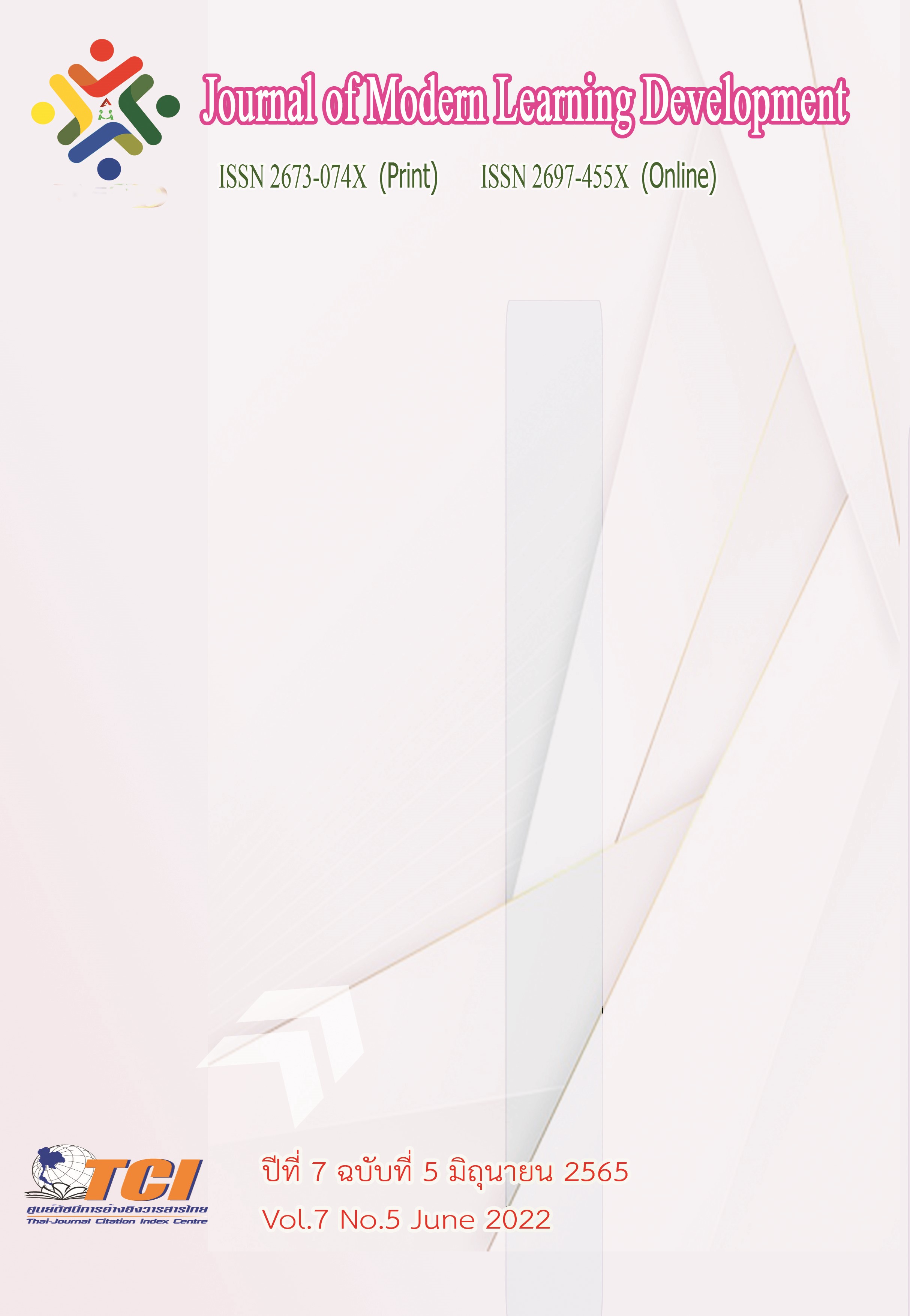Framework for Evaluation for Open Data of Government Agencies in Thailand
Main Article Content
Abstract
This research had the objective to study government agencies in Thailand which applied the evaluation framework for transparency of public databases (Open Data). The researcher found that Thailand has a “high” level of Open Data for public information, and there are indicators of transparency for all the major processes in program implementation. However, accessing this information and government support for applying these data is at a “low” level or, at least, lower than it should be. The evaluation framework for Open Data in Thailand has been adjusted and improved to include indicators based on international experience. However, the ranking of countries for transparency using the Corruption Perception Index indicates that, in 2020, Thailand ranked as low as 104 among 180 countries around the world (with a score of 36 out of a potential top score of 100). In that same year, Thailand ranked 5th for transparency of public data among member countries of ASEAN. In 2016, the Thai Cabinet approved a resolution that all government agencies must conduct a self-assessment on integrity and transparency in program operations, in accordance with the criteria announced through the public website and the communication channel of each government agency. However, the international assessment results still find that Thailand is under-performing compared to the family of nations. At the time of this research, there were 8,197 Thai government agencies which were expected to do the Open Data self-assessment according to the framework set by the Office of the National Anti-Corruption Commission.
Article Details
References
ถิรพร สิงห์ลอ. (2564). อันดับความโปร่งใสปี 2563 ไทยได้คะแนน 36/100 และอยู่ที่อันดับ 104/180 ของโลก. ออนไลน์. สืบค้นเมื่อ 18 ธันวาคม 2564 แหล่งที่มา: https://www.sdgmove.com/ 2021/02/01/cpi2020-th-sdg16/
มารุต บูรณรัช. (2564). แนะนำระบบแพลตฟอร์มสร้าง API จากไฟล์ชุดข้อมูลเปิด Open Data Service Platform (Open-D) ขาดประเภทเอกสาร ออนไลน์. สืบค้นเมื่อ 20 ธันวาคม 2564 แหล่งที่มา https://www.nectec.or.th/innovation/innovation-software/opendata_2.html
วฤษฎิ์ อินทร์มา. (2563). “เหตุอันเป็นข้อพิจารณาในการเปิดเผยหรือไม่เปิดเผยข้อมูลข่าวสารของราชการ ตามแนวคำวินิจฉัยของคณะกรรมการวินิจฉัยการเปิดเผยข้อมูลข่าวสารกรณีศึกษา การขอให้เปิดเผยการแข่งขัน การสอบคัดเลือก หรือการนำเสนอผลงานวิชาการ” วารสารวิชาการนิติศาสตร์ มหาวิทยาลัยทักษิณ. 8 (10). 103-121.
ศุภวัฒนากร วงศ์ธนวสุ และคณะ. (2562). การยกระดับและพัฒนาองค์กรตามแนวทางการประเมินคุณธรรมและความโปร่งใสในการดำเนินงานของหน่วยงานภาครัฐ (กรณีศึกษาต่างประเทศ : OPEN DATA ข้อมูลสาธารณะเพื่อยกระดับการประเมินคุณธรรมและความโปร่งใสของประเทศไทย) ขอนแก่น: วิทยาลัยการปกครองท้องถิ่น
ศุภวัฒนากร วงศ์ธนวสุ และสุริยานนท์ พลสิม. (2562). ระบบการประเมินคุณธรรม ความโปร่งใสและธรรมาภิบาลของหน่วยงานภาครัฐและเอกชนในสาธารณรัฐเกาหลี มาเลเซีย และสิงคโปร์. ขอนแก่น: วิทยาลัยการปกครองท้องถิ่น.
สฤณี อาชวานันทกุล. (2560). ยัง “ลักปิดลักเปิด”? ไทยอยู่ตรงไหนใน Open Data Barometer. ออนไลน์.สืบค้นเมื่อ 10 ธันวาคม 2564 แหล่งที่มา https://thaipublica.org/2017/04/thailand-open-data-barometer/? fbclid=IwAR2NhjdGx_3A6R6gw4OfwQhZmOzGYzEyDH9yM 6yIArTSIJXaqD47QdRhMeQ
สาครรัตน์ นักปราชญ์ และ คัคนางค์ จามะริก. (2559). “การเปิดเผยข้อมูลภาครัฐในรูปแบบ Business Intelligence (BI) ในยุค Big Data” วารสาร กสทช. 2559. ประจำปี 2559 หน้า 553-583.
สำนักงานพัฒนารัฐบาลดิจิทัล (องค์การมหาชน) (สพร.). 2564). มาตรฐานและหลักเกณฑ์การเปิดเผยข้อมูลเปิดภาครัฐ ออนไลน์. สืบค้นเมื่อ 10 ธันวาคม 2564 แหล่งที่มา https://www.dga.or.th/policy-standard/standard/dga-005/54063-2/
สุภศรี กาหยี, โพโรจน์ เอี่ยมชัยมงคล, ธนพรอธิกิจ. (2564) แหล่งสารสนเทศจากข้อมูลเปิด. วารสารห้องสมุด. 65 (1), 75-98.


